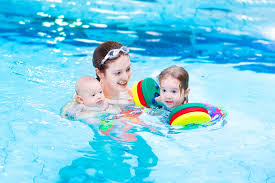Best Swim Lessons: Understanding Swim Education in Singapore
Swimming is a vital life skill and an excellent form of physical activity suitable for all ages. In Singapore, where access to pools and water activities is common, enrolling in the best swim lessons is a priority for many parents and adults alike. With a focus on safety, structured learning, and skill progression, swim lessons across the country cater to beginners, advanced learners, and those seeking water confidence.
What Defines the Best Swim Lessons?
The term “best” in swim lessons is subjective and typically refers to a combination of several key factors:
- Qualified Instructors: Effective lessons are conducted by certified swim coaches with experience in teaching various age groups and proficiency levels.
- Structured Curriculum: A good swim program offers a clear pathway from beginner to advanced stages, covering water safety, floating, basic strokes, and competitive techniques.
- Safety Standards: Lessons must take place in a safe environment, with proper pool maintenance, trained supervision, and first-aid readiness.
- Age-Appropriate Learning: Programs are tailored to different age brackets—from infants and toddlers to teenagers and adults—with teaching methods suitable for each group.
- Consistency and Progress Monitoring: Progress should be regularly evaluated to ensure learners are developing water skills confidently and steadily.
Types of Swim Lessons Available
In Singapore, the swimming landscape includes a range of swim lesson types:
1. Infant and Toddler Lessons
These classes focus on water familiarization, comfort, and bonding between parent and child. Though the goal is not to teach formal strokes, young children are introduced to basic water movements and breath control.
2. Learn-to-Swim Programs for Children
This stage targets children aged four and above, where they are taught foundational water skills like floating, paddling, and breathing. As they progress, they are introduced to strokes such as freestyle, backstroke, and breaststroke.
3. Stroke Correction
For swimmers who already know the basics, stroke correction lessons help refine techniques to improve efficiency and prevent injuries. This is often used by those preparing for school competitions or fitness goals.
Indoor vs Outdoor Swim Lessons
One distinction in Singapore’s swim lesson offerings is between indoor and outdoor facilities. Indoor lessons, such as those conducted in temperature-controlled pools, provide consistent conditions and are not weather-dependent. This is particularly beneficial for infants and younger children. Outdoor lessons, often conducted in public swimming complexes, are more common and may offer more flexible schedules and larger class sizes.
Swim School Features in Singapore
Swim schools in Singapore vary in their offerings, but many include the following elements:
- Small Class Sizes: Helps ensure personal attention and individual progress tracking.
- Trial Classes: Allow learners to assess the program before committing long-term.
- Customizable Packages: Options for private, semi-private, or group sessions.
- Accreditation: Schools are often affiliated with organizations like SwimSafer, Singapore Swimming Association (SSA), or international bodies such as Austswim or STA (UK).
OtterSwim: An Example of Swim Education Approach
One example of a swim provider in Singapore that incorporates many of the above features is OtterSwim. Known for its structured programs for babies, toddlers, children, and adults, OtterSwim operates in indoor heated pool environments, which supports year-round instruction in a controlled setting. The school follows a developmental approach, emphasizing water safety, skill progression, and age-appropriate instruction.
While OtterSwim is one of many swim schools in the city-state, its setup reflects the wider emphasis in Singapore on creating supportive and effective swim education frameworks.
Factors to Consider When Choosing a Swim Program
Before enrolling in a swim lesson program, it’s useful to consider the following:
- Location and Accessibility: Proximity to home or school can influence commitment and attendance.
- Coach-to-Student Ratio: Smaller ratios usually mean more personalized feedback.
- Pool Environment: Indoor pools may be preferable for younger children or those sensitive to temperature.
- Lesson Objectives: Clarify whether the goal is water confidence, stroke development, or competitive training.
- Feedback and Reviews: Hearing from other participants can provide insight into the teaching style and atmosphere.
Swimming as a Lifelong Skill
The best swim lessons do more than teach strokes—they equip learners with skills that enhance safety, confidence, and health throughout life. In a country like Singapore, where recreational swimming, water sports, and pool access are commonplace, learning to swim is both a practical and essential part of childhood development and adult life.
Conclusion
Finding the best swim lessons in Singapore depends on personal needs, age, and goals. Whether through public pools, private instructors, or structured programs like those offered by OtterSwim, there are many quality options available. A strong swimming foundation promotes safety, physical fitness, and enjoyment of water activities, making swim education a worthwhile investment at any age.

